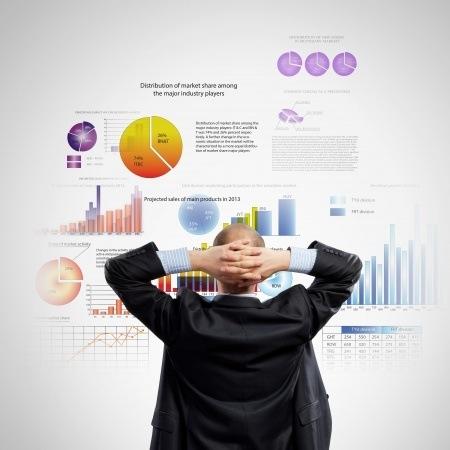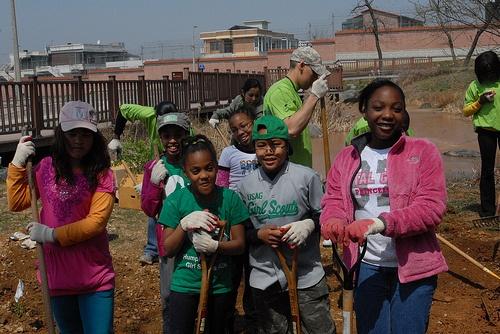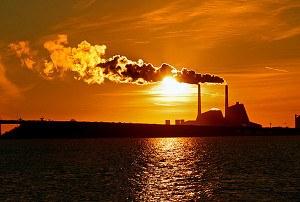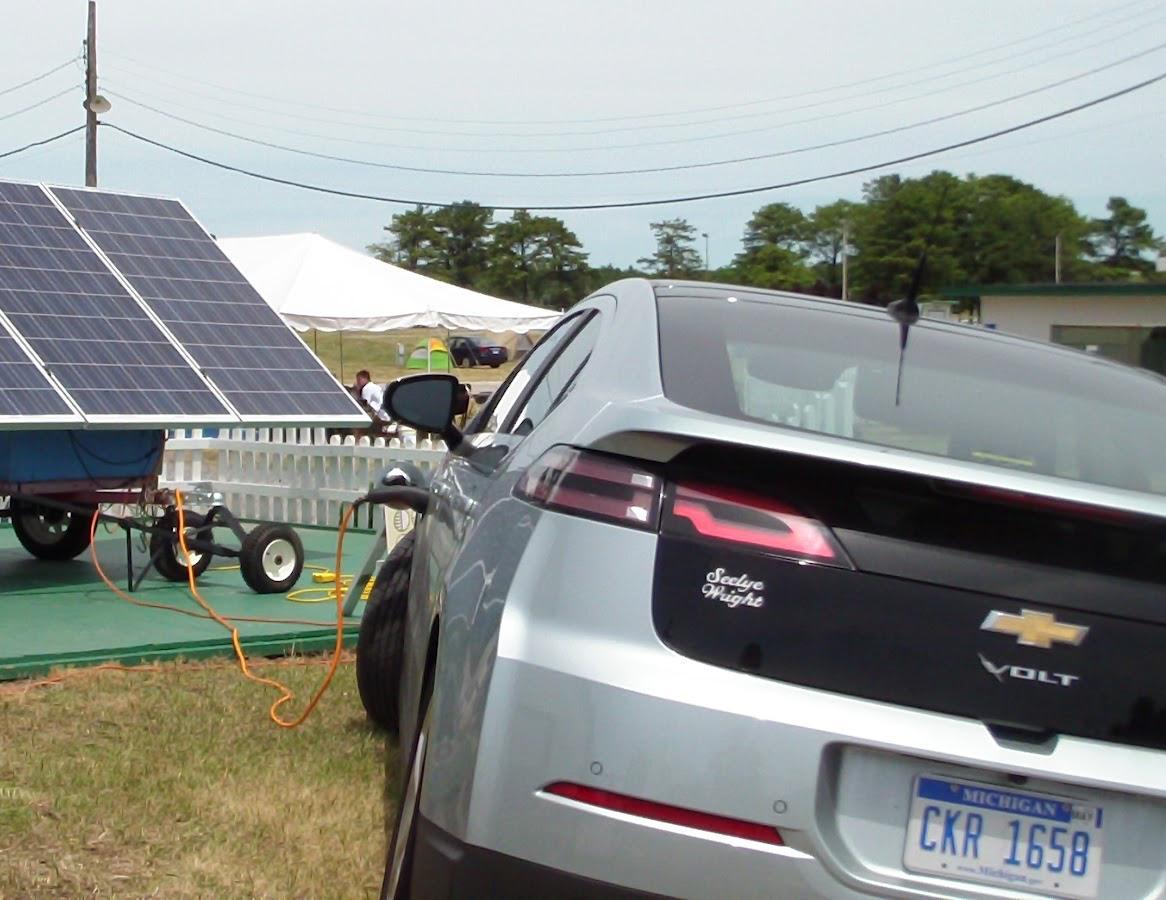Services to Impact Funds: Why Data Can't Give Us Everything We Need


By Marta Maretich
The impact investing sector is developing at an amazing rate and so are the needs of impact funds, investors, advisors and companies. As we move rapidly beyond the early development stages, services are starting to emerge as an important theme for 2014.
A recent article charted one aspect of the emerging trend: BCorp's plan to use their data aggregation systems as a basis for providing a variety of services to the sector. The introduction of BAnalytics, a merger between the investment management tool Pulse and BCorp’s GIIRS, will allow the group to offer a range of data-based services including rating, evaluation and analysis.
BCorp is following in the footsteps of the traditional financial services industry where advances in technology have delivered the ability to manage mind-blowing amounts of live data — and turn profits from them. As traditional financial service providers have discovered to their joy, data, crunched at this speed and at this scale, has the power to transform business performance — and data aggregation and analysis is itself big business for firms who make wrangling data their focus.
BCorp’s move toward offering data-based services is a welcome sign of a maturing impact marketplace, and it indicates the shape of things to come. Fund and company ratings are needed to establish standards in the sector; benchmarking holds out the hope of creating comparisons, while more transparency can do no harm. We’d be remiss not to develop these systems.
Yet for now the most important application of data may be that it proves convincing to investors. Mainstream investors, who include large institutional investors and foundations, could unlock huge amounts of capital -- provided they can be persuaded to trust in the impact approach. Data is reassuring both to them and to the financial professionals who advise them, according to research by the World Economic Forum (WEF).
However, although important, data-based services won’t offer everything the impact sector needs to grow today. The nature and ecosystem of impact investing makes it different from traditional investing in fundamental ways — and this will drive the need for a whole range of specialist services not necessarily dependent on data.
Beyond data-based services
Take metrics for example.
Impact businesses and funds must build social and environmental impact metrics into their plans along with all the usual financial ones, correct? Straight financial metrics are no mystery to most businesspeople and financiers — years of trial and error have taught us how to “do” them. The same can’t be said for social and environmental impact metrics, which have been around for a relatively short time.
The recent emergence of IRIS as the leading measurement system -- developed by GIIN and now administered, along with GIIRS and PULSE, through BCorp -- means that the sector now has access to tools for measurement. (Whether it’s a good idea to make a single-metrics approach so dominant at this early stage is a question we won’t tackle here.)
However, the mere existence of IRIS doesn’t mean impact measurement is now taken care of — and here is where the need for services comes in: How do impact enterprises and funds use IRIS? How do they know which measures to choose from the long list? How do they embed impact metrics into their business plans and their operations? How do they translate these processes across geographies and cultures?
The answer is that many will need expert help to set up impact data collection, reporting and analysis. There is a role for impact metrics specialists who can help establish processes and create systems that deliver accurate impact information while supporting business objectives.
Call in the specialists
This is only a small example of the kind of specialist service that impact sector businesses and funds will need as the sector takes off, "specialist" being the operative word here.
Impact investing is a new sector — and it’s a complex one due to the range of actors and agencies involved. Hybrid financial arrangements are common, and collaborative partnerships, blending public, private, philanthropic and government capital, are increasingly seen. Impact businesses often pass through a number of agencies, including philanthropic intermediaries, on their way to market viability, and there is a growing spectrum of kinds, flavors, types and sizes of impact businesses.
Fund managers, investors and financial advisors — even very clever ones — will need help navigating this expanding field of opportunity. Impact businesspeople will need access to expertise as they grow their businesses in a multi-stakeholder context and roll them out across the globe.
In both cases, having access to specialists — that is, experts who understand the unique requirements of impact investing — will be a decisive factor in success. Media, finance, legal, governance, research, scientific, managerial and HR expertise, with a spin on impact, will all be in demand, as will specialists capable of working internationally and in cross-sector partnerships.
Finding the expertise we need
Where will these experts come from? Some will come from the sector itself. Graduate programs are already incorporating social investing into their curriculi and a generation of “multilingual”professionals is beginning to emerge. These new impact investing leaders will understand the language of finance as well as they do that of social and environmental benefit. Their contributions will undoubtedly fill some of the sector’s need for services, but not all.
In the immediate future, the impact investing sector will need to reach out to the wider finance and business community to find the services it needs to grow. There will be a role for agencies who can help impact investing financiers and businesses source expertise from a pool of able specialists in a range of fields. As the sector continues to become more accepted by the mainstream, and the needs of impact finance and business become better understood, this pool should become larger and better adapted to meet the needs of impact. The challenge lies in finding a way to give the sector easy access to the expertise it needs now.
So, data, though essential, will not provide us with all the answers. Instituting systems for capturing and analyzing data (both financial and social) is a step in the right direction. But there is a risk that the focus on data and data-driven services may distract us from the real task at hand: building impact businesses and funds that deliver tangible social and environmental benefit along with financial profit. To do this will take huge amounts of human ingenuity, innovation, "hard" as well as "soft" expertise — and, yes, data too.
Image credit: Maximpact
Marta Maretich is Maximpact’s Chief Writer and Blog Editor. Maximpact is a free global portal for ventures / deals that assist the social, impact and sustainability sectors in fund raising and collaboration of different kinds. It operates as a secure web-based listing service that allows sustainability, philanthropy & CSR professionals, as well as entrepreneurs, intermediaries, and funds to share information about initiatives and impact investment deals, online.
Global Supply Chains: Deciding the Way Forward


By Dr. Maximilian Martin
As we start using our new holiday gifts this year, it is too easy to ignore the miraculous supply networks that allow us to enjoy the products of human labor and ingenuity around the world.
Sustainability is increasingly viewed as a strategy for enduring in a world of scarce resources and unlimited needs, but we seem to be locked in an endless cycle of merely reacting to deep-seated economic and social problems. It is now time to decide on the way forward: do we want to make supply chain upgrades happen across the board and reap the benefits, or continue using half-measures and Band Aids?
Perhaps more so than other industry creating value through global supply chains, the textile and garment industry illustrates the crossroads we face. A $3 trillion industry that encompasses the manufacturing and selling of textiles and garments, apparel has long been considered a source of economic progress around the world and has historically served as a catalyst for national development and industrialization. The inverse of this growth and the accelerating production of fashion has been a broadening and deepening track record of poor working conditions and heavy pollution.
The collapse of the Rana Plaza factory in the Bangladeshi capital of Dhaka, in April 2013, jolted to life widespread and increasingly prolonged scrutiny of the industry. It has brought to the forefront longstanding questions over how to bridge the gap between economic viability and social and environmental performance.
To the credit of many buyers involved, attempts to address the social and environmental issues plaguing the apparel industry in Bangladesh (and elsewhere) are being made — the European buyer-funded Bangladesh Accord on Fire and Building Safety and the U.S. buyer-led Alliance for Bangladesh Worker Safety are just two of the high-profile efforts underway. But The New York Times also just published a piece reporting how clothing companies like Mango have declined to contribute to a landmark $40 million compensation fund for victims of the Rana Plaza disaster. And as we are just entering the new year, in Cambodia, where apparel is the country’s most important industry, a special military unit in riot gear dissolved a garment worker demonstration for higher wages on Jan. 2, using force.
How can we graduate to a new normal where next level sustainable value creation is the standard state of affairs? To help address this need, Impact Economy — a global impact investment and strategy firm — has just issued my report, "Creating Sustainable Apparel Value Chains," so industry stakeholders can begin to build a common way forward. The key insight is this: Systems created this situation, and a systemic solution is now needed to address it. The good news is there is ample value creation potential. A redesign of production processes paired with better infrastructure and training can save up to 20 percent of chemical inputs, up to 40 percent of energy and up to 50 percent of water. Building humane working conditions and an improved environmental footprint and staying competitive need not be at odds.
The report offers a framework that links greater resource productivity with an ambitious agenda to improve working conditions and environmental footprints. This framework includes four key levers that need to be pulled in order to achieve industry transformation, including:
- Fostering total resource productivity and transparency across the supply chain
- Upgrading the industry infrastructure by (impact) investing
- Improving working conditions with a new level of ambition
- Studying and replicating the best practices of leading producers.
Of course, no one actor or lever is a panacea unto itself. But the framework presented in the report offers a more comprehensive way to consider the issues influencing the development of the industry -- and to design effective responses to them. And the apparel industry is far from unique. Fragmented approaches to industry transformation, which otherwise prevent a fundamental and systemic shift to sustainability, are widespread.
Take the commodities industry. In 2012, the value of the global metals and mining industry approached $1 trillion. In 53 mining countries, three-quarters of whom are low- or middle-income, extractive industries are a cornerstone for millions of people. They often face a unique set of social challenges due to the high-impact nature and close proximity to environmentally sensitive areas. Geostrategic tensions result from attempts by the world’s main powers to guarantee their preferential long-term access to vital commodities.
The electronics industry is no different. Covering everything from computers, mobile phones and televisions -- to name just a few consumer products, the global electronics market is set to reach $1.4 trillion by 2015, according to Global Industry Analysts, Inc. Yet again, electronic waste due to the use of toxic chemicals and difficulty of recycling is a growing issue.
Growing trends such as green growth and energy efficiency, the rise of the LOHAS (Lifestyles of Health and Sustainability) consumer, and rising demand for affordable products and services at the base of the pyramid (BoP) will only serve to emphasize the need to determine how global supply chains can be harnessed to drive inclusive value creation — in all industries, and for stakeholders and investors alike.
As we go about using our electronics and fashion gifts in the new year, let us not forget that the opportunity for sustainability has the potential to be great. But Rana Plaza-type disasters won’t be avoided, and the impact of progress will increasingly worsen unless we attempt a bolder strategy. To achieve industry transformation, we need to step up the game. It is now time to decide on the way forward.
___
Maximilian Martin, Ph.D. is the founder and global managing director of Impact Economy. Before creating the brand Impact Economy and founding the firm, he served as founding global head and managing director of UBS Philanthropy Services. Dr.Martin also created the first university course on social entrepreneurship in Europe. His work, and more than one hundred articles and position papers, have helped define the trajectory of market-based solutions and the impact revolution in finance, business and philanthropy. He was invited to write the primer on the status of impact investing for G8 policymakers in 2013, which considered the potential and development options for this new USD 36 billion branch of the financial industry.
Girl Scouts Help the Environment Through Thousands of Projects


When most people think of Girl Scouts, they think of yummy cookies that are sold once a year by adorable little girls. Now Girl Scouts can be linked to sustainability. The Girl Scouts Forever Green (GSFG) Take Action program began in honor of the organization’s 100th anniversary. The Alcoa Foundation gave a two-year, $1.5 million grant to expand the program to 12 countries (Australia, Brazil, China, Guinea, Iceland, Italy,Jamaica, Mexico, Suriname, the United Arab Emirates, the United Kingdom, and the U.S.) By the end of the program, the results showed that it was a raging success with 639 million kilowatts of energy saved, 226 million gallons of water conserved, one billion pounds of carbon dioxide eliminated, and 120 million pounds of waste eliminated. In addition, there were 409,940 aluminum cans recycled, 123,753 native plants/trees planted, and 2,462 wildlife fed and sheltered.
"Although our girls might be famous for wearing the color green, it's clear that they are enthusiastic about 'going green' and working to preserve our natural resources," said Anna Maria Chavez, CEO, Girl Scouts of the USA in a statement. "As an organization committed to helping girls become leaders who make a difference in the world, we couldn't ignore their passion for the environment, and the generous contribution from Alcoa Foundation provided an outlet for girls to funnel their ecological energies."
The results of the GSFG program are detailed in a report. The program lasted from July 2011 to September 30, 2013, and during that time girls and their troops did thousands of projects to help the environment. There were three main areas of focus: Reduce Waste, Earth Hour and Rain Gardens. The goal of the Reduce Waste area of focus was to encourage people to use reusable bottles and recycle aluminum cans. For example, Girl Scout Brownies (ages seven to nine) created a PSA called the “Life of a Water Bottle” to show how plastic lives in the environment for years and causes pollution. A group of 12 girls and 13 community members from Girl Scouts of Greater Los Angeles participated in a project where they refilled their water bottles 32 times, and made and shared 12 reusable bags, plus they recycled 307 aluminum cans.Replacing incandescent bulbs with Energy Star qualified ones or other energy efficient bulbs was the goal of the Save Energy area of focus. Various Girl Scout troops participated in the Earth Hour event to turn off lights for one hour on the designated Saturday in March. The Girl Scouts of Colorado are a good example of a Save Energy project. They held Earth Hour events in two sites, and received a donation and support from Colorado’s Wal-Mart Foundation, which enabled them to give every participant a reusable bag and CFL lightbulb.
Rain gardens were created at schools, homes and others sites to increase green space and wildlife habitats, and improve water quality through infiltration, which reduces waterborne pollutants in streams, rivers and water supplies. The first rain garden was planted at the Houston Arboretum & Nature Center. Over 500 people participated in planting 169 native plants, totaling 1,800 square feet of rain gardens. They also installed a 2,500 gallon rainwater cistern to allow water to flow into the shady rain garden. A second rain garden in Houston was constructed by 56 people next to a designated wildlife area at the Environmental Institute of Houston.
Photo: Morning Calm Weekly
Healthcare bodies set up ethical collaboration framework


Five global healthcare organizations have established a Consensus Framework for Ethical Collaboration to support partnerships that aim to deliver greater patient benefits and support high quality patient care.
Derived from the individual codes of ethical practice and health policy positions of the five supporting organizations, the framework is based on four overarching principles: putting patients first; supporting ethical research and innovation; ensuring independence and ethical conduct; and promoting transparency and accountability.
The five organizations are the International Alliance of Patients’ Organizations (IAPO), International Council of Nurses (ICN), International Federation of Pharmaceutical Manufacturers and Associations (IFPMA), International Pharmaceutical Federation (FIP), and the World Medical Association (WMA).
While individual codes of practice govern the activities of each group, the new broad-based consensus framework applies across much of the healthcare community to include interactions involving patients, nurses, pharmacists, doctors, and the healthcare industry.
“Ensuring ethical conduct, transparency and accountability are key in the development and testing of medicines and other health technologies,” commented Marie-Paule Kieny, Assistant Director-General for Health Systems and Innovation at the World Health Organization. “We encourage all organizations involved to examine ways to develop monitoring mechanisms that can support these principles.”
Picture credit: © Pat Olson | Dreamstime.com
EPA's New Greenhouse Gas Emission Standards Now Open for Public Comment


Politically contentious as ever, climate change is back in the headlines, as a brutal, deep and prolonged southward shift in the polar vortex has put much of the continental U.S. in a deep freeze. In stark contrast, people living in the Southern Hemisphere – in Australia, Argentina and Brazil, for example – are trying to cope with heat waves, the threat of drought and power outages in major cities. While many are scrambling with the immediacy of such problems, the U.S. Environmental Protection Agency (EPA) is moving forward with longer term, structural fixes to address climate change conceived by the Obama Administration. On Jan. 8, the EPA issued proposed new performance standards that would put an upper limit, or cap, on carbon and greenhouse gas (GHG) emissions from new, stationary power plants under Section 111 of the Clean Air Act.
Capping those nasty GHG emissions
Published in the Federal Register and open for public comment for 60 days, the proposed caps on GHG emissions would establish separate, "new standards of performance for new affected fossil fuel-fired electric utility steam generating units and stationary combustion turbines."
Another standard would apply to "fossil fuel-fired electric utility steam generating units and integrated gasification combined cycle units that burn coal, petroleum, coke and other fossil fuels that is based on partial implementation of carbon capture and storage as the best system of emission reduction."
It has taken the EPA more than three months to publish the new performance standards in the Federal Register, a delay that prompted speculation "that the EPA was having second thoughts about its justification for CCS (carbon capture and storage) as the 'best system of emission reduction' for coal plants," environmental attorneys in Ballard, Spahr's Energy and Project Finance and Environment and Natural Resources groups noted in a news alert.
“This speculation came amid allegations that the studies on which the EPA relied were not adequately peer-reviewed and that the agency improperly relied on projects that received government funding but would not otherwise be economically viable to show that CCS is 'adequately demonstrated.'"The published proposed rule conformed with the EPA’s original factual and legal rationale for selecting CCS technology as the basis for the emission standards.”
Going it alone to deal with climate change
With efforts to forge bi-partisan consensus and action frustrated by opposition in Congress, the EPA's new GHG emissions performance standards are the latest in a series of actions taken by President Obama and his administration to address climate change in a more integrated, holistic manner; one that seeks to capitalize on opportunities as well as address the risks, threats and challenges rapid climate change – and an associated increase in the frequency and intensity of extreme weather events – presents society in the U.S. and globally.
The new GHG performance standards for new, stationary power generation sources have come about as a result of a June 25, 2013 Presidential Memorandum in which President Obama directed the EPA to propose precedent-setting limits on carbon and GHG emissions. The memorandum coincided with the launch of his National Climate Change Action Plan.
Commenting on the initiative, EPA Administrator Gina McCarthy said,“EPA is announcing the first action that we are taking under the president’s climate action plan to address the most significant public health challenge of our time, which is climate change. We are announcing proposed regulations that will limit carbon pollution from this country’s single largest individual sources — power plants.”
The EPA’s proposed new standard would limit carbon emissions from new, large natural gas-fired power plants to 1,000 pounds of CO2 per megawatt-hour (MWh) and cap emissions from smaller natural gas-fired plants to 1,100 pounds of CO2 per MWh. Coal industry executives have risen up in arms over the new proposals, asserting that President Obama is trying to drive them out of business.
Under the proposed new EPA rule, coal-fired power plants would have to limit their carbon emissions to the same 1,000 pounds per MWh as natural gas-fired plants, though the EPA has built in some greater operational flexibility for them by allowing them to meet a "somewhat tighter limit if they choose to average emissions over multiple years."
A final rule from the EPA is expected by the end of of 2014. With this process completed, the EPA will move forward and propose new GHG emissions rules for existing power generation sources, Ballard, Spahr's attorneys point out:
"While this proposal does not address greenhouse gas emissions from existing power plants, once the EPA adopts standards for new sources, it will be required to regulate greenhouse gas emissions from existing power plants as well. President Obama has directed the EPA to propose a rule for existing plants by June 1, 2014, and to sign a final rule by June 1, 2015."
Image credit: Flickr/Martini DK
Finding Gooey Goodness in Nutella's Huge Supply Chain


Nutella, the world’s best known hazelnut spread, is proud of its supply chain. And it should be. The buttery, chocolaty spread that was created by Ferrero and first commercialized in 1964 has withstood more than the test of time, in spite of its troublesome logistics and occasionally demanding customer base. It’s weathered damaging class-action litigation aimed directly at the heart of what the company says makes Nutella so special: its ingredients and the nutritional value of its concept. It weathered the storm because while companies were falling by the wayside during the 2008 recession, Ferrero was stoically gathering its resources for a new sustainability plan and planning for the next year.
Nutella’s supply chain (what it ingeniously calls its global value chain) is no slouch, either. The company gets its hazelnuts from Turkey, chocolate from Africa, palm oil from Malaysia, vanillin (a substitute for expensive vanilla) from France and sugar from Brazil. It’s an international operation that spans just about every continent across the globe. It’s fed children from the four corners of the earth (well, except large sections of Asia), and served as the favorite breakfast ingredient for meals-on-the-go for decades.
Yet admittedly, in a millennium when long, cumbersome and expensive supply chains are often treated as the nemesis to sustainable, eco-friendly marketing, Nutella’s brightly-colored infographic seems oddly out of place with today’s obsession with carbon footprints. The list of its production facilities (which number nine locations across the globe) reflect not only the company’s success in the past half-century, but also the challenges it continues to face in shrinking that eco-footprint.
Of course, a brightly-colored map of markers and accomplishments rarely tells a company’s whole story. According to Nutella’s 2012 sustainability report, the company has been working hard to meet its own sustainability goals. It’s a board member of the World Cocoa Foundation, which supports the USAID-funded program African Cocoa Initiative. It reports that it is in the process of wrapping up its transition to 100 percent certified sustainable palm oil. It’s invested resources in a community school in the Ivory Coast, purchased carbon-neutral cocoa, partnered with a land trust organization in Ghana and delved into community training and development programs in several parts of Africa.
Since the company’s $3 million settlement of a 2012 class action that accused Nutella of not being up front with the percentages of that ingredient list and their nutritional value (which it turns out, was largely sugar, followed by palm oil and then hazelnut, with a high amount of saturated fat), Ferrero has learned a valuable lesson about transparency and public expectations. Although its sustainability reports started before the litigation came to light, it’s clear that Ferrero hasn’t misplaced the goal: to prove to global consumers that taste still triumphs. Nutella’s supply chain may be exceptionally long, but customers’ memories of the sweet, gooey spread will outlast it.
Image of Nutella jar by Allison.Hare
Image of map from OECD.
Interview: Anisa Kamadoli Costa on Sustainability at Tiffany & Co.


Anisa Kamadoli Costa is chair and president of The Tiffany & Co. Foundation and vice president of global sustainability and corporate responsibility at Tiffany & Co. Anisa leads the global corporate responsibility and sustainability function at Tiffany & Co. and manages the annual philanthropic giving portfolio of $6 million of the Tiffany & Co. Foundation.
Prior to joining Tiffany & Co., Anisa worked at the Rockefeller Brothers Fund. She also serves as chair of the board of the Environmental Grantmakers Association, a group composed of more than 220 foundations from the U.S., Canada and Europe that represents more than $1 billion in environmental grantmaking.
I asked Anisa a few questions in the run-up to the Smarter Sustainability Reporting Conference in London next month. She was very generous with her time and open in her replies. Read on.
Elaine Cohen: Tell us about your professional background and how you came to be Vice President-Global Sustainability & Corporate Responsibility at Tiffany & Co. What specific experience prepared you for this role?
Anisa Kamadoli Costa: When I joined Tiffany & Co. 10 years ago, I came to the company with a multidisciplinary background, which has certainly fit into the global nature of our sustainability work. Factoring global perspectives into sustainability is critical to our efforts at Tiffany & Co. My graduate degree is in international affairs from Columbia University’s School of International and Public Affairs (SIPA), and I have worked in both finance and private philanthropy. Through my dual role overseeing sustainability and philanthropy for Tiffany & Co., we have strategically aligned our philanthropic giving with our company’s sustainability efforts. Strategic philanthropy is a key pillar of Tiffany & Co.’s sustainability work, with a particular focus on responsible mining and coral and marine conservation.
EC: How is your corporate social responsibility (CSR) team composed?
AKC: Sustainability has always been a part of Tiffany & Co. and is central to how we operate as a luxury brand. Our commitment to sustainability was formalized in 2009 with the establishment of the CSR Committee of the board of directors, as well as my department. I report directly to Michael Kowalski, chairman & CEO of Tiffany & Co., who is extremely knowledgeable and passionate about the environmental issues that the company addresses, such as responsible mining. The fact that our team has such strong senior-level support allows us to collaborate closely with internal and external stakeholders and to continue to lead our industry.
EC: How involved is the Board CSR Committee in your work? Do you find this to be helpful?
AKC: The CSR Committee – and in fact the entire board of directors – is committed to sustainability and continues to demonstrate that it is a business priority for the company. This high-level leadership emphasizes the importance of sustainability to our business. It is not just the right thing to do, but a smart business decision that I believe improves the long-term strength of our company and our industry.
EC: What are your priorities -- now and looking toward the next few years?
AKC: For many years, the focus of Tiffany & Co.’s sustainability work has been on responsible mining and the responsible sourcing of our raw materials, ranging from diamonds and gold to the paper in our iconic Blue Boxes and bags. Responsible sourcing continues to be a key priority for us moving forward. There are two timely mining issues that we are addressing, that will be crucial over the next year or so.
Tiffany & Co. is a founding member of the Initiative for Responsible Mining Assurance (IRMA), which seeks to develop true third-party, multi-stakeholder standards for responsible mining. I have been involved in IRMA since 2006, and through this process we collaborate with representatives from industry, nongovernmental organizations (NGOs), impacted communities, labor organizations and others, who are all equal participants in the development of the standards. IRMA’s draft standards will be released for public comment in 2014 and piloted in 2015. We value the role that true third-party processes play in raising the bar for our industry and believe in this process as critical to improving standards for responsible mining.
Because of our commitment to the preservation of the natural world, we are raising awareness of the risks associated with the development of the proposed Pebble Mine in Bristol Bay, Alaska. Bristol Bay is home to the world’s most productive salmon fishery, which would be devastated by one of the world’s largest open-pit gold and copper mines. We believe that Bristol Bay is a special place where mining cannot be done without forever destroying its wildlife, landscape and community, and we have publicly declared that should the Pebble Mine be developed, we will not source gold from it. Additionally, the United States Environmental Protection Agency (EPA) has authority under the Clean Water Act to block the mine, and they have conducted an assessment to evaluate the impact of large-scale mining on the watershed. The next year will be crucial in the protection of Bristol Bay.
EC: Is there a conflict between luxury brands and CSR? Is this something that gets discussed at Tiffany & Co.?
AKC: I actually don’t see a conflict between luxury and CSR as it pertains to Tiffany & Co. As a luxury brand with a 177 year history, we believe that our customers put their trust in us to operate responsibly and to ensure that the jewelry we craft was created in an ethical and responsible way. We take that responsibility seriously and strive to live up to those expectations, ensuring that sustainability considerations are a part of our decision-making processes.
EC: What's Tiffany & Co's record in responsible mining? Are you leaders or followers? Do you get many approaches from activists?
AKC: Under the leadership of Michael Kowalski, our chairman and CEO, Tiffany & Co. has placed a priority on responsible mining issues for nearly 20 years. We source the majority of our precious materials from mines we know, and have traceability and control throughout our supply chain. In addition, we have a long history of collaboration with the nonprofit sector and strongly value the role they play in improving mining standards around the world and representing civil society’s perspectives in these challenging issues.
EC: Who do you expect to be the main audience for your sustainability report? How do you ensure that your report gets noticed?
AKC: We have a very robust sustainability website, which we use to communicate our sustainability initiatives to all of our stakeholders. We launched our sustainability report in 2011. It is a Web-based report, allowing access to a variety of audiences such as our customers, employees, investors, NGOs, the academic community, government and our business partners. The website offers different levels of information so visitors with varying interests can find what they are looking for on the site. We are committed to using the Tiffany brand to increase awareness about the issues we care about, and our website is one tool for that.
A version of this piece was originally published on the CSR Reporting Blog.
Elaine Cohen is a CSR Consultant and Sustainability Reporter, founder/manager of Beyond Business Ltd and author of the CSR Reporting Blog
Slàinte! New verification scheme protects Scotch Whisky supply chain


Consumers of Scotch Whisky are being given even greater reassurance that what they buy is the genuine article, thanks to a new verification regime.
The Spirit Drinks Verification Scheme ensures that every part of the Scotch Whisky supply chain, from distiller to consumer, within Scotland or beyond, is mapped by the industry, registered with the UK Government and inspected to ensure it complies fully with all the rules on the production of Scotch.
Scotch Whisky is already protected as a Geographical Indication (GI), meaning it can only be produced in Scotland according to UK rules. The European Union (EU) requires that the production process of every GI is verified by the authorities. The new scheme ensures that Scotch Whisky has the same high protection as other European GIs, such as Cognac.
All businesses involved in any stage of the production of Scotch Whisky must register with Her Majesty's Revenue & Customs (HMRC) by listing all their relevant sites within and outside Scotland, including distilleries, maturation facilities, blending and bottling plants. Bottlers of Scotch Whisky abroad will also be subject to controls.
The total annual cost of the verification scheme of around £350,000 is being shared across the Scotch Whisky industry, in accordance with EU rules.
David Frost, Scotch Whisky Association chief executive, said: "This is a step change in the protection of Scotch Whisky and should be warmly welcomed. It will greatly improve the industry's ability to stop the sale of adulterated Scotch Whiskies bottles abroad."
Picture credit: © Ed Isaacs | Dreamstime Stock Photos
Solar Market Heading for a 'Second Gold Rush' in 2014


Rooftop solar panel purchases are on the rise. That’s great news for the solar industry, says Deutsche Bank Market Research, which is predicting a stellar year and a “second gold rush” for the North American solar market.
The bank’s report, "2014 Outlook: Let the Second Gold Rush Begin," gave additional incentive for solar installation companies, which Deutsche Bank predicts will lead this resurgence. It placed the base demand for 2014 at around 46 GW, shooting to 56 GW in 2015.
"We expect another gold rush by downstream installers to add recurring MW ahead of policy changes over the next two to three years," the report said. It also predicted that financing difficulties would eventually improve.
It makes sense. Installers across the country are taking advantage of the upswing before current tax credits expire in 2016, and the residential market offers increased potential. At the present time, homeowners can claim a 30 percent tax credit for new solar installations. That’s not only music to taxpayers, it’s a boon for installers that hope to capitalize on that increasing market.
Those that may particularly benefit, says Deutsche Bank, are the solar leasing companies.
"Solar leasing companies are highly profitable and have strong incentives to maximize the number of leasing customers ahead of ITC expiration in 2016," leading to a competitive decrease in leasing prices.
But according to the analysts, there will still be challenges ahead, with surges for downstream (installers, in particular) and some market tightness due to the gap between supply and demand. The analysts expect that the limitations will eventually be eased by multiple expansion.
Increased investment in the solar PV industry was already beginning to show in late 2013. Solar companies in the U.S., Canada and abroad report increased projects - downplaying last year’s predictions that solar and wind would see a decline following changes in federal tax incentive programs.
Image courtesy of Lucas Braun
US Plug-In Electric Vehicle Sales Nearly Double In 2013


Good news for those living at the intersection of manufacturing and environmentalism. Here in the U.S., sales of plug-in electric and hybrid vehicles almost doubled between 2012 and 2013 with an 84 percent jump to 96,600 of the vehicles sold. That's 49,000 plug-in hybrids (like the Volt) and 47,600 pure battery powered plug-in vehicles sold.
As a resident of Michigan and a guy concerned with environmental and sustainability issues, I've always had a love-hate relationship with the auto industry. On one hand, auto emissions are a main source of greenhouse gasses and the international thirst for oil, as gasoline production accounts for almost half of our oil use. On the other hand, friends, family, neighbors and the community depend very notably on income from the auto manufacturing sector.
The foundry just a few hundred feet from where I grew up employs hundreds of good folks with good paying jobs and benefits. They manufacture parts for car companies, both foreign and domestic. So when things are going well for the auto industry, the local economy does decent. But when the domestic auto industry is in a slump, the economy pretty much collapses. There was about a 10-year stretch until the recent auto rescue when the Michigan economy was in a free-fall and lost almost a million jobs in a decade. WUMP. And believe me, you could see it every day in the news: companies and mom-and-pop shops closing; layoff reports; and boarded-up windows at malls and local retail spaces.
I definitely cheer the resurgence of the auto industry as it puts people and manufacturers back to work. And I even admit that I kind of like the smell of the foundry air when I happen to be at the hardware store near my old neighborhood.
I cheer even louder, however, when part of that resurgence is coupled with growing normalization of plug-in electric vehicles on our roads and in our neighborhoods. I cheer for electric cars parked in the grocery store parking lot like any other mortal's car. "Just stopping in to get eggs and milk. In my electric car."
No longer is the electric car just one more of the future wonders to be found in Popular Science magazine. Now they're on the roads, the ultimate proving ground. And as actual use grows, so does the supporting infrastructure. Charging stations are sprouting up in communities across America, reducing the anxieties later adopters of electric cars may have about how to charge the car up on the go. Little old Muskegon, Mich. has no fewer than 14 of them throughout the city.
Also encouraging is the continued growth of traditional hybrid vehicles, which grew by 15.3 percent over the last year to 489,413 cars.
Cars in 2013 also broke a record for average fuel efficiency in new cars at 24.9 MPG. That number is going to jump even higher as new, federally mandated fuel efficiency standards come into play, which require average fuel efficiency to be 54.5 MPG by 2025 - more efficient than even the smaller, fuel-sipping cars are today.
It's heartening to see a cleaner change of direction in the automotive industry, and it's heartening to see consumers embracing that future. Also, it's great to see friends and neighbors going back to work.